LEAF offers a plethora of native shrub bundles. Our edible shrub bundle, however, is one of our most popular shrub offerings - and for good reason! You can customize your own edible shrubs, and turn your backyard into your very own edible urban garden. For only $100 +HST, you receive four native edible shrubs (one to two feet in height at delivery), mulch, delivery, a Planting and Care Guide and a specialized fact sheet.
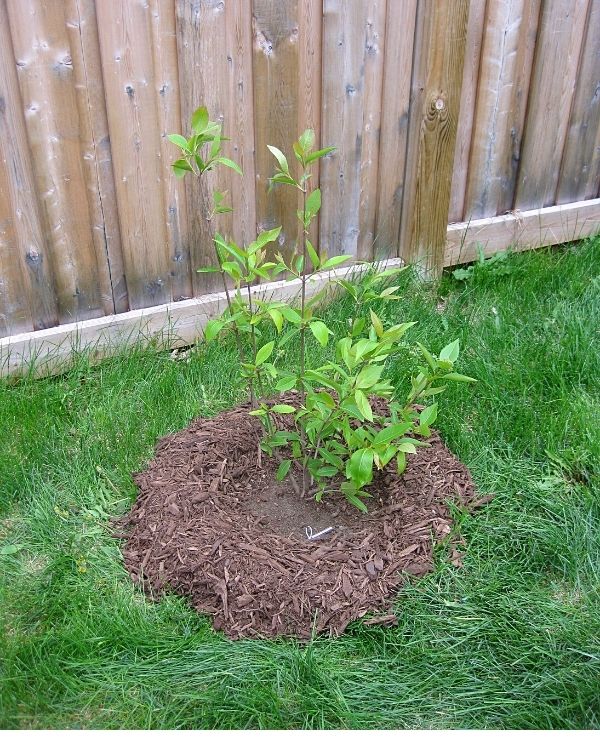
When deciding where to plant your shrubs, it is important to consider the mature size and spread, as well as the surrounding environmental conditions (e.g., space, sunlight levels and soil type), which will help them survive and thrive. Most shrubs will produce fruit about 1-2 years after planting, so be sure to provide proper care by watering and mulching, especially in the first few years after planting!
To help you choose what to plant in your yard, we’ve identified five of the most popular edible shrub species and their associated benefits for birds.
Lowbush blueberry (Vaccinium angustifolium)
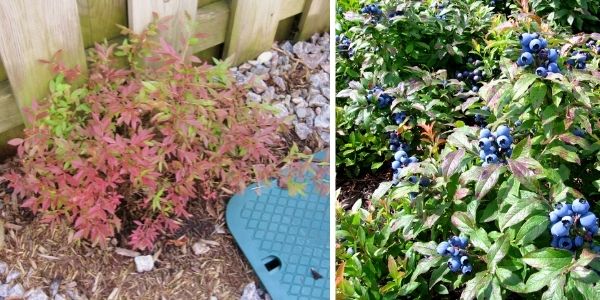
The lowbush blueberry grows to a mature height and width of approximately two feet, making it an attractive option for smaller planting spaces. When ripe, the dark blue berries are sweet, juicy and rich in antioxidants. They can be eaten raw or used in jams, jellies and juices. The berries are also a great food source for many common backyard birds including the American robin, blue jay and cedar waxwing!
Northern wild raisin (Viburnum cassinoides)
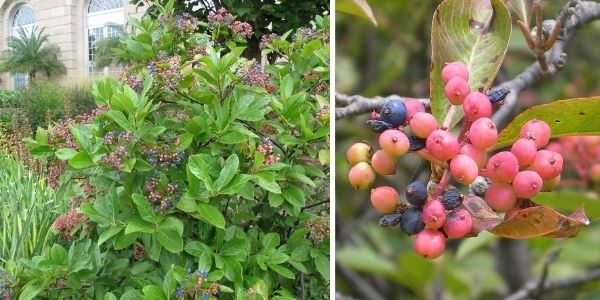
The northern wild raisin shrub grows to a mature height and spread of approximately five feet and produces clusters of berries that turn from pink to bluish-black when ripe. The fruit tastes sweet- similar to blueberries- and can be eaten raw or cooked. The northern wild raisin fruit may persist throughout the fall and winter, providing an integral late season food source for resident birds, including the eastern towhee, gray catbird and northern mockingbird.
Purple flowering raspberry (Rubus odoratus)
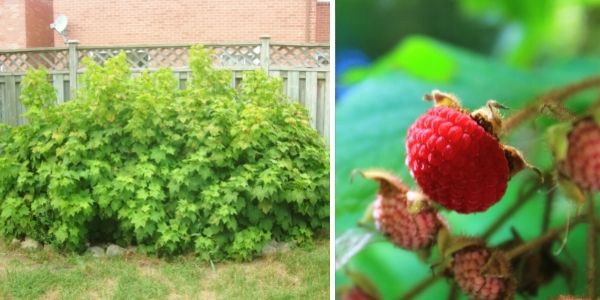
The purple flowering raspberry shrub grows to a mature height of about four to five feet. It may aggressively spread if not pruned, which is great for yards with lots of space. It is also known as the thimbleberry, since the fruit shape resembles a thimble. When ripe, the red fruit tastes tart and sweet and is often used to make jams, jellies and pies. Backyard birds that feed on the fruit of the purple flowering raspberry shrub include the northern cardinal, red-winged blackbird and indigo bunting.
Pasture rose (Rosa Carolina)
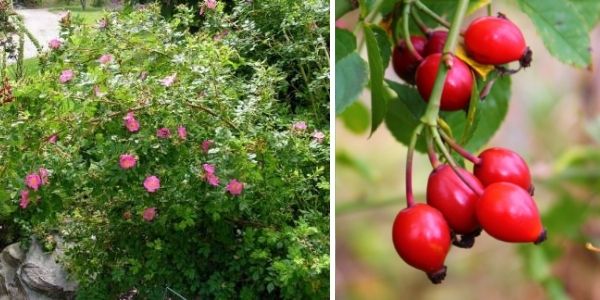
The pasture rose shrub grows to a mature height and spread of approximately four feet. As with the raspberry, the pasture rose may spread aggressively if not pruned. The shrub produces small red fruits known as rosehips. The taste is sour, so can be eaten raw, but is more often cooked to make teas, syrups and Schnapps. The fruit of the pasture rose may remain on the shrub into winter, acting as an important food source for local wildlife. Birds that feed on the fruit include the American goldfinch, black-capped chickadee, sparrow and wren species.
Highbush cranberry (Viburnum trilobum)
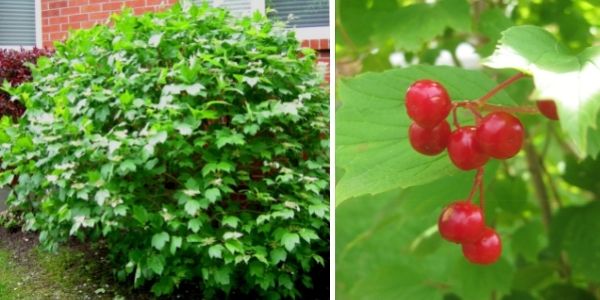
The highbush cranberry shrub grows to a mature height and width of about eight feet. The fruit of the highbush cranberry are red to orange when ripe, with a sour, bitter taste when eaten raw. It is recommended to only eat the fruit of the highbush cranberry if it has been processed and cooked, such as in jams, jellies, juices and syrups. Despite the sour taste to us, the fruit of the highbush cranberry provides a delicious treat for birds including the American robin, cedar waxwing and common yellowthroat.
Interested in feeding local birds right from your backyard? Apply today to plant native shrubs through our subsidized planting program!
Vivian Yip was the Residential Planting Programs Assistant at LEAF.
The #BackyardBiodiversity campaign is a partnership initiative with the Toronto Wildlife Centre and is supported by Ontario Power Generation.
LEAF offers a subsidized Backyard Tree Planting Program for private property. The program is supported by the City of Toronto, the Regional Municipality of York, the City of Markham, the Town of Newmarket, the Regional Municipality of Durham, the Town of Ajax, the City of Oshawa, the City of Pickering, the Township of Scugog, the Town of Whitby, Ontario Power Generation, Ontario Trillium Foundation and GrandTrees/Canadian Trees For Life.
